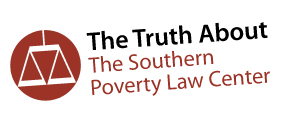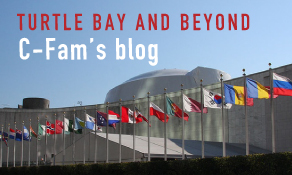The Link between Gender-Based Violence Response and Abortion
INTRODUCTION
Violence against women and girls, whether perpetrated in the home, the workplace, at school, in public spaces, or during times of war or crisis, leaves devastating effects on survivors and their families. At the national and international level, there is widespread consensus across political lines that such violence should be prevented, that those who have suffered from it should receive help, and that perpetrators should be held accountable for their crimes. Yet despite near-universal agreement that violence against women and girls should be eliminated, the inclusion of language on “response to gender-based violence” in laws and policies is far from innocuous, when the practical implications of that terminology are taken into consideration. From the definitions of what such a response should entail, to the organizations most likely to carry out the policy, there is inherent potential that responding to violence against women and girls, a seemingly uncontroversial goal, involves one of the most controversial issues of the day: abortion.
Gender-based violence: not just about women and girls.
While the terms “violence against women and girls” (VAWG) and “gender-based violence” (GBV) appear on their face to be interchangeable, there are key differences. In 2012, the United States Agency for International Development (USAID) and the Department of State jointly issued the “United States Strategy to Prevent and Respond to Gender-Based Violence Globally.” This is one of several strategy documents issued under the Obama administration by various government agencies that have not yet been updated under the Trump administration. According to the document, the strategy defines “gender-based violence” as:
Violence that is directed at an individual based on his or her biological sex, gender identity, or perceived adherence to socially defined norms of masculinity and femininity. […] Women and girls are the most at risk and most affected by gender-based violence. Consequently, the terms “violence against women” and “gender-based violence” are often used interchangeably. However, boys and men can also experience gender-based violence, as can sexual and gender minorities.
As the strategy makes clear, GBV terminology broadens the scope beyond women and girls, not only by including men and boys, but by calling into question the male-female binary through the inclusion of “sexual and gender minorities.” This understanding of the definition of GBV is also reflected in international contexts, as exemplified by the Inter-Agency Working Group on Reproductive Health (IAWG), which is made up of a coalition of UN agencies, governments and other donors, non-governmental agencies, and academic institutions. According to their definition:
Gender-based Violence (GBV) is an umbrella term for any harmful act that is perpetrated against a person’s will, and that is based on socially ascribed (gender) differences between males and females…The risks of GBV increase in conflict-affected settings, particularly for women and girls. Men and boys can also be at risk of GBV.
Certainly, men and boys can be victims of violence, and this is a problem worthy of attention. The specific framing of violence as “gender-based,” however, is frequently used as a replacement for, and, arguably, a subversion of, VAWG, violence against women and girls. As a result, when GBV language appears in programming intended to advance the interests of women and girls, it can have the effect, intended or unintended, of rendering women and girls invisible in the very policies intended to help them. Furthermore, incorporating “sexual and gender minorities,” exacerbates existing disputes about spaces traditionally limited to women and girls only, such as shelters for abuse victims, prisons, or areas in widespread use, such as restrooms and locker rooms.
In the context of a law or policy aimed at advancing women and girls, using GBV language in place of VAWG changes the frame of focus from the intended beneficiaries, women and girls, and shifts it to all victims of violence with a gender component: certainly a worthy focus for policy in itself, but not of policy about women and girls.
Gender-Based Violence Response and Abortion Linkages
Moving beyond the potential concerns with the “gender” terminology, it is important to examine what is broadly understood to be included in a GBV “response,” at both a national and international level. In the context of the United States, the 2012 strategy document on prevention and response to GBV (referenced above) provides a crucial first step:
The strategy represents a multi-sector approach that includes the justice and legal, security, health (including sexual and reproductive health), education, economic, social services, humanitarian, and development sectors, and that works at the individual, family, community, local, national, and global levels.
It is notable that this guidance focuses on one specific subcategory of “health,” sexual and reproductive, but makes no mention of other relevant areas, including trauma care or mental or behavioral health services. Here it is essential to note that there is no international right to abortion, either in human rights law or in humanitarian law, otherwise known as the laws of armed conflict. Nevertheless, the phrase “reproductive health,” with or without “sexual,” is inextricably linked with abortion, at least where legal, both in national and international contexts. Because of this, several high-level members of the Trump administration have delivered statements objecting to its inclusion in UN and other internationally-negotiated documents, in line with its pro-life policy position.
Further clarifying the dangers of including GBV response in U.S. foreign aid is a 2014 document from USAID titled “Toolkit for Monitoring and Evaluating Gender-Based Violence Interventions Along the Relief to Development Continuum.” Included in the toolkit is a questionnaire for data collection with a section called “Legal Framework for Emergency Contraception and Abortion.” The USAID document on GBV contains questions regarding the legal status of abortion, the circumstances under which it is permitted, the evidence or documentation required to qualify, and who is expected to cover the cost. All of this clearly links abortion to GBV response in U.S. programming.
In addition to its own internal strategy documents, USAID cites the World Health Organization (WHO) in a 2016 report, “Lessons from the Gender-Based Violence Initiative in Mozambique,” released in conjunction with AIDS Free and the President’s Emergency Plan for AIDS Relief (PEPFAR):
According to WHO guidelines, at a minimum, protocols/guidelines for health system response should address: a) empathic and nonjudgmental listening by health professionals; b) measures to enhance a woman’s safety; and c) provision (directly or via referrals) of mental health and legal support. Comprehensive post-rape care services include: a) first-line support or psychological first aid; b) emergency contraception to women who seek care within five days; c) referral to safe abortion if a woman is pregnant as a result of rape, in accordance with applicable laws; d) STI and/or HIV post-exposure prophylaxis, as per applicable protocols; and e) hepatitis B vaccination.
While its guidelines give a nod to obeying “applicable laws,” it is nevertheless concerning that WHO deems abortion to be part of GBV response “at a minimum.” What this means in practice is that, even if abortion is only legal in exceptional cases, the possibility of referrals must exist, which in turn requires proactively locating providers with the necessary means to carry out the procedure. Logically, once the means are in place, restricting abortion to allowable exceptions becomes far more difficult in practice.
In keeping with the theme of abortion as a “minimal” component of GBV response, the UN’s IAWG guidance cited above updated its “Inter-Agency Field Manual on Reproductive Health in Humanitarian Settings” in 2018, including a revision of its Minimum Initial Service Package (MISP) to include “safe abortion care.” Describing the significance of the update, the IAWG guidance says:
The inclusion of [safe abortion care] within the MISP increases the chances of safe abortion care being funded and provided, ultimately saving women’s lives.
Following this change, the Global Protection Cluster, made up of nongovernmental organizations, international organizations, and UN agencies issued its 2019 “Handbook for Coordinating Gender-Based Violence Interventions in Emergencies.” The United Nations Population Fund (UNFPA) is designated as the lead agency on the issue of GBV. The handbook says, “It is essential for GBV coordinators and partners to understand the components of the Minimum Initial Service Package (MISP) for reproductive health interventions in an emergency.”
The acceptance and promotion of the MISP by trusted humanitarian actors is a priority of abortion proponents, who have also been urging its inclusion in negotiated resolutions at the UN. Unfortunately, many of those working to provide aid to people in crisis are unaware of the degree to which abortion politics have already infected the humanitarian sector.
Practical aspects of GBV response: Who are the “first responders?”
The field of GBV response at the international level is already well populated with organizations and networks setting standards and definitions, as indicated above. The UN’s IAWG is led by a coalition of more than twenty organizations. These groups make up its Steering Committee, and many of them are vocal abortion proponents. The IAWG 2018-2019 Steering Committee members included the Center for Reproductive Rights, the International Planned Parenthood Federation, Ipas, Population Action International, and the Population Council, abortion advocacy and implementing groups. Other groups are less defined by the abortion issue in public perception, but nevertheless promote it in their work, such as the International Rescue Committee (IRC), which claims that “since 2011, [it] has implemented 21 acute emergency responses that included contraception and abortion care as part of its basic health package.”
Given the widespread understanding that GBV response includes abortion, and given the fact that the bulk of organizations working specifically in this area are either actively promoting abortion or willing to partner with those that are, it is not enough to merely exclude explicit abortion language or references to “reproductive health” from laws and policies aimed at violence prevention and response. For GBV programming to be plausibly pro-life, it must be proactive in including explicit safeguards, leaving abortion-promoting organizations with a stark choice: cease abortion advocacy and operations or be ineligible for partnership. This is far from a trivial undertaking, as the example of the United States, explored in the following section, seeks to makes clear.
Can GBV response be separated from abortion? The U.S. as a case study.
Of all the major donor countries supplying aid around the world, the United States is exceptional both in the scale of its work in the area of GBV and in its efforts to use laws and executive orders to keep from exporting abortion alongside much-needed assistance. In law, the 1973 Helms Amendment to the Foreign Assistance Act of 1961 prevents federal funding from being used to promote or perform abortions overseas. However, this law does not block all funding to foreign-based abortion organizations; they may still receive U.S. grants for other work provided they keep their funds segregated. At the policy level, Republican administrations since the Reagan administration in the 1980s have enacted the Mexico City Policy, which seeks to close that loophole by making foreign abortion providers ineligible for U.S. funding. This policy was most recently reinstated under President Trump in 2017, under the name Protecting Life in Global Health Assistance (PLGHA). President Trump also expanded the policy to cover all global health assistance, rather than just the family planning division covered by previous iterations of the policy. However, this policy applies only to health assistance, not to GBV programming.
A recent report from the U.S. Government Accountability Office (GAO), requested by a group of Democrat members of Congress, suggests that PLGHA is successfully targeting the most aggressive proponents of global abortion. The report examines the impact of grants that were awarded to organizations unwilling to agree to the terms of PLGHA, but which were awarded before the policy took effect. As a result, these organizations had to forfeit the funding, which could then be reassigned to other, compliant, organizations. While the vast majority of grantees agreed to comply with PLGHA, the majority of the money forfeited had been awarded to international abortion giants Marie Stopes International and the International Planned Parenthood Federation, and local affiliates of both groups. The report also revealed the importance of expanding the scope of PLGHA beyond family planning alone: the focus areas of the forfeited funds included HIV/AIDS, tuberculosis, nutrition, and maternal and child health. Like VAWG/GBV, these represent seemingly-innocuous areas for programming that are nevertheless being encroached upon by the global abortion lobby as a way to gain a foothold in countries around the world and qualify for U.S. government grants.
Despite the successes of PLGHA, there remain significant gaps in its coverage. Funding for multilateral organizations remains outside its scope, as do humanitarian assistance and disaster relief, which is critical in terms of the issue of GBV response. Much of national and international programming to prevent and respond to GBV is specifically focused on the context of war and other crises, as is the work of the UN’s IAWG, which brings a specific “reproductive health” dimension to this work and includes GBV as one of its major themes, alongside “safe abortion care.”
If GBV response is being incorporated into a law or policy that is not covered by existing PLGHA restrictions, it should therefore be qualified by explicit caveats of a similar nature to the PLGHA, and within the same text.
One way in which pro-life policymakers have worked to limit the damage and controversy that the abortion issue inevitably brings to a policy discussion is by separating work designed to promote the economic advancement of women and girls from work involving health care. When Advisor to the President Ivanka Trump launched the Women’s Global Development and Prosperity Initiative (WGDP) in 2019, it focused on removing barriers to women’s education, employment, and access to full participation in the economy. Feminist groups immediately denounced the initiative for excluding “health” among its priorities, which, based on their criticisms, could be reduced to meaning contraception and abortion.
Clearly, health, including that of women and girls, is an important priority for international aid programs. But it does not follow that every policy must be comprehensive, and the response of abortion groups to being denied an entry point via the health issue to an initiative meant to empower women is telling. But by the same logic, incorporating GBV response into any program targeted at women’s economic advancement carries heavy baggage: GBV response is universally understood as encompassing health interventions, and those organizations working to define what those interventions entail–even at a minimum–are either active or complicit in ensuring abortion is part of the response. Even in the absence of explicit references to “(sexual and) reproductive health,” such organizations and coalitions implementing a policy will interpret these aspects as being included by default, with no need of further encouragement.
Conclusions and recommendations
Despite broad agreement that violence against women and girls must be prevented and addressed around the world, donors and providers of aid seeking to work in this area must navigate a minefield if they wish to keep their programs free of abortion and its advocates. If their work is meant to focus on women and girls, whether limited to the issue of violence or not, they should use caution regarding “gender” language to prevent mission creep. Pro-life policymakers should exercise care in introducing references to GBV response in proposed policies and laws that have been kept otherwise “clean” of abortion language, or of health issues more broadly, as doing so will inevitably introduce those topics and their attendant controversies. For those working in U.S. policy and programming, it is critical to be aware of the limits and loopholes in PLGHA. Where GBV response policy and programming falls under funding streams exempted from PLGHA, including PLGHA-like language will help ensure U.S. dollars stay out of the coffers of abortion groups and go into helping women and girls avoid, or survive, the horrible aftermath of, violence.
See PDF for full citations.
View online at: https://c-fam.org/definitions/the-link-between-gender-based-violence-response-and-abortion/
© 2024 C-Fam (Center for Family & Human Rights).
Permission granted for unlimited use. Credit required.
www.c-fam.org









